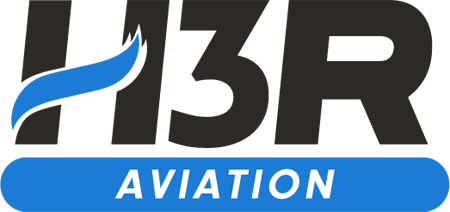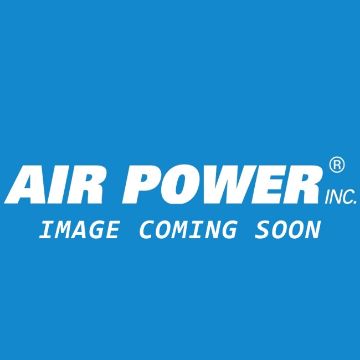H3R fire extinguishers are engineered specifically for aviation, delivering dependable fire suppression when it matters most. Utilizing a clean agent like Halotron, these extinguishers are non-toxic, non-corrosive, and safe for sensitive avionics and electronics. Designed for ease of use, they are lightweight, compact, and fully compliant with FAA and aviation safety standards. With a rapid discharge rate, H3R extinguishers provide pilots and passengers with essential protection against electrical and flammable liquid fires—ensuring safety in the skies.
A344T H3R 1.3 lb. Red Fire Extinguisher
9 in stock - New
C352TS H3R Aviation 2.5 lb. Red Fire Extinguisher
18 in stock - New
339TS H3R Aviation 3.55 lb. Red Fire Extinguisher, with bracket
On Backorder - New
347TS H3R Aviation 3.75 lb. Red Fire Extinguisher, with bracket
On Backorder - New
349TS H3R Aviation 3.75 lb Red Fire Extinguisher, w/ hose, w/ bracket
On Backorder - New
351-H3R H3R Aviation 12.5 lb Red Fire Ext discharge hose - use bkt 809
On Backorder - New
361-H3R H3R Aviation 17 lb. Red Fire Extinguisher, with wall hook
On Backorder - New
398-H3R H3R Aviation 15.5 lb. Red Fire Extinguisher, with wall hook
On Backorder - New
775 WHLD H3R Aviation 150 lb. Novec 1230 Wheeled Fire Extinguisher
On Backorder - New
QUALITY AND RELIABILITY
When it comes to protecting your aircraft, the reliability of your fire extinguisher is non-negotiable. H3R Aircraft Fire Extinguishers are built to meet rigorous aviation safety standards, ensuring that they perform when you need them most. Made with high-quality materials and advanced fire suppression technology, these extinguishers are designed for maximum efficiency. Whether you're dealing with a small cabin fire or a more serious onboard emergency, H3R's durable and reliable products offer peace of mind, knowing your fire protection equipment will work under pressure.
FAA-APPROVED
H3R fire extinguishers are FAA-approved, meaning they meet the strict regulations required for use in aviation. This approval ensures that you are getting equipment that is not only effective but also fully compliant with aviation safety standards. Whether you're flying small personal aircraft or commercial planes, H3R's products are specifically designed to address the unique fire risks in the aviation environment. Choosing an FAA-approved extinguisher like H3R guarantees that your aircraft meets the legal and safety requirements set forth by aviation authorities.
EASY TO USE AND MAINTAIN
H3R Aircraft Fire Extinguishers are designed with simplicity in mind. Their user-friendly operation allows anyone to quickly and efficiently deploy them in case of an emergency. With intuitive controls and straightforward instructions, even those with limited fire safety training can handle the extinguisher confidently. In addition, H3R fire extinguishers are low-maintenance, requiring only occasional checks and servicing to keep them in peak condition. This ease of use and low upkeep makes them an ideal choice for pilots and aircraft operators who prioritize safety without adding complexity.
FAQ ABOUT H3R FOR AIRCRAFT
WHAT IS HALON?
Halon is a liquefied, compressed gas that stops the spread of fire by chemically disrupting combustion. Halon 1211 does not leave a residue and is rated for class "A" (common combustibles), class "B" (flammable liquids) and "C" (electrical) fires. Halon 1211 is a low-toxicity, chemically stable compound that, is easily recyclable. Halon has been used for fire and explosion protection throughout the 20th century, and remains an integral part of the safety plans in many of today's manufacturing, electronic and aviation companies. Halon protects computer and communication rooms throughout the electronics industry; it has numerous military applications on ships, aircraft and tanks and helps ensure safety on all commercial aircraft. Because Halon is a CFC, production of new Halon ceased in 1994 as required by the Montreal Protocol. There is no cost effective means of safely and effectively disposing of the Halon. Therefore, recycling and reusing the existing supply intelligently and responsibly to protect lives and property is the wisest solution.
WHY IS HALON THE BEST CHOICE?
Fire needs fuel, oxygen and heat to propagate. The most common extinguishing agents like water, carbon dioxide, dry chemical and foams attack the fire physically to deprive the fire of one or more of these three three elements. Halon differs in the way it puts out the fire. It offers some of water's cooling effect and some of carbon dioxide's smothering action, but its essential extinguishing technique lies in its capacity to chemically react with the fire's components. It actually interrupts the chain reaction of fire. Water is very effective on class A fires (common combustibles like wood and paper). Halon is effective on common combustibles (although not as effective as water), but Halon is also effective on class B (flammable liquids), and it does not conduct electricity back to the extinguisher operator (class C). Halon is similar to CO2 in that it is suitable for use in cold weather and leaves no residue. Unlike CO2, however, Halon does not displace the air from the area where it is dispensed. Even for the toughest fires, less than an 8% concentration of Halon by volume is required, leaving plenty of air to use in the evacuation process. Also, unlike CO2, there is no danger of "cold shock to avionics or other sensitive electrical equipment. Dry chemical fire extinguishers are effective on A, B and C class fires. However, they are highly corrosive, and create billowing clouds of choking dust. Dry chemical extinguishers should not be used in an aviation environment. Foam extinguishers are effective on class A and B fires, and are particularly useful for preventing ignition of flammable liquid spills. However, foams are inferior to Halon in that they do require cleanup and in that they are not for use on electrical fires. Halon 1211 is a liquefied gas which, when discharged, leaves the nozzle in a stream that is about 85% liquid and 15% gas. This gives the agent a range of 9 to 15 feet and offers significant advantages in fighting fires in large aircraft cabins.
HOW SAFE IS HALON?
Halons are low-toxicity, chemically stable compounds that have been used for fire and explosion protection from early in the last century. Halon has proven to be an extremely effective fire suppressant. Halon is clean (i.e., leaves no residue) and is remarkably safe for human exposure. Halon is a highly effective agent for firefighting in closed passenger carrying areas. Due to its effectiveness and relatively low toxicity, the FAA continues to recommend or require Halon extinguishers for use on commercial aircraft. Extensive toxicity evaluations have been compiled by nationally recognized United States medical laboratories and institutions on Halon 1301 (used in fire suppression systems) and Halon 1211 (used in portable fire extinguishers)These evaluations have shown that Halon 1301 is the safest extinguishing agent available, and that Halon 1211 is the second safest.
DO I NEED AN FAA FORM 8130-3 FOR THIS FIRE EXTINGUISHER?
No, not in North America. A factory-new Halon fire extinguisher does not require an 8130-3 because it is not considered an aircraft part. The FAA does not provide a list of authorized fire extinguishers for aircraft. The FAA does specify the following regulations. According to AC 20-42C, "Hand Fire Extinguishers for Use in Aircraft:" "The FAA accepts hand fire extinguishers approved by Underwriters Laboratories, Inc." "For occupied spaces on aircraft, Halon 1211 extinguishers should not be less than 2½ pounds (1.2kg) capacity. These extinguishers should have a minimum 5B:C rating; not less than 8 seconds effective discharge time; not less than a 10 ft. (3 meter) range, and may be equipped with a discharge hose."






